#Dermochelys coriacea
Text
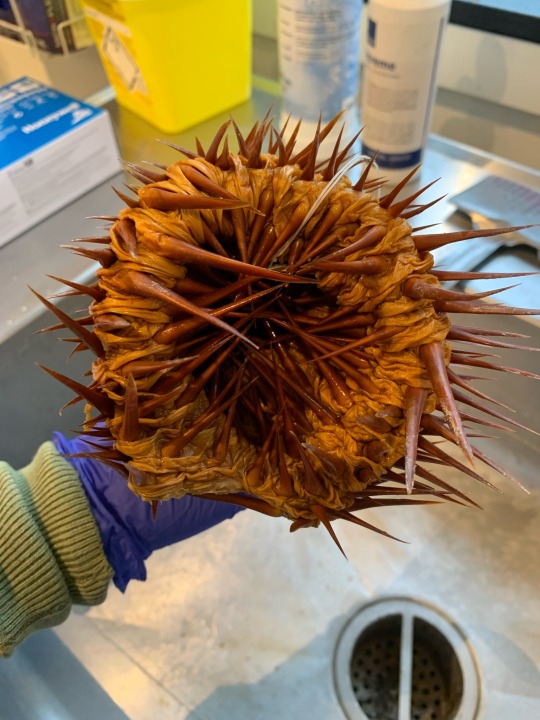
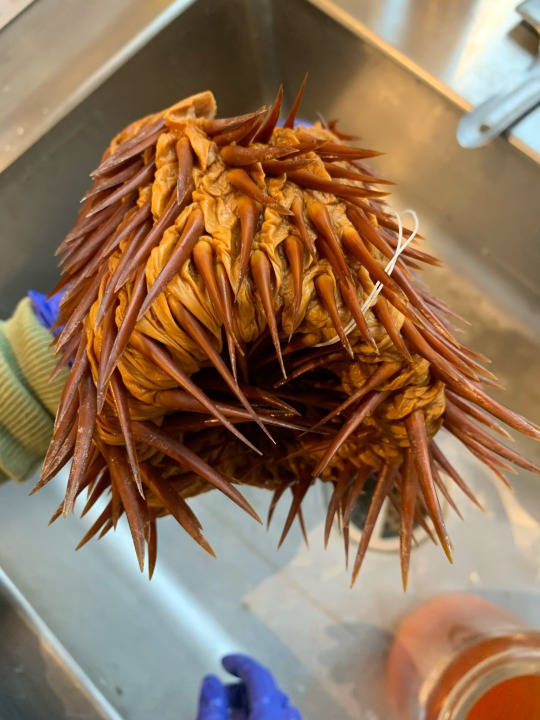
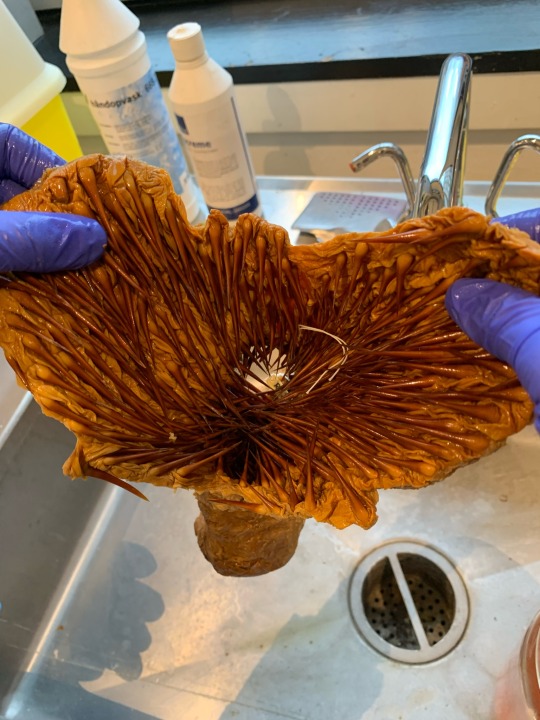
In case you needed some nightmare fuel, this is what the oesophagus of a leatherback sea turtle looks like on the inside.
Those spines keep jellyfish in but let sea water out. Unfortunately, they also keep plastic bags in, making them very vulnerable to plastic impaction!
#science#biology#Nightmare fuel#animals#sarlacc#i took these photos at work so I think they are safe for work#I have a very cool job though so…#Dermochelys#Dermochelys coriacea#leatherback#leatherback sea turtle#this item is going on display in the new Natural History Museum of Denmark#so you can all come and enjoy it when we open in a few years
4K notes
·
View notes
Text

Leatherback sea turtle (Dermochelys coriacea)
And here's the last of the illustrations made for the UK bycatch project. Not my usual subject and yet an old friend, as I had previously illustrated a Leatherback for the Marine Animal Response Society. Like last time I had a lot of fun with this one, especially the white markings. They are a beautiful and willing subject.
These are the very biggest of the turtles, growing to a whopping 2.7 metres in length and weighing over half a ton, though most are significantly smaller. Highly recommend looking up photos of them next to humans to get a sense of their size. Also internet famous for their impressively spiked throat, which helps keep jellyfish (their prey) from flowing back outside once caught.
#illustrations#scientific illustration#Leatherback sea turtle#Leatherback turtle#Leatherback#turtle#sea turtle#Dermochelys coriacea#digital art
60 notes
·
View notes
Text

I know I mostly upload Mélusine pics, but I wanted to take a break and present an anthropomorphic-inspired aquatic creature. Specifically, a leatherback sea turtle (or Dermochelys Coriacea, as its scientific name goes).
As you probably guessed, their shells aren't tough (as you'd expect from typical turtles) but soft, made of leather and fat. While this makes them vulnerable to predators, it also gave them the advantage to swim faster, reaching 35 klm/hour.
They are the largest species of sea turtles, their length reaching 1,80 - 2,20 cm and they can live approximately from 50 - 100 years.
Also, tell me which hairstyle you prefer! Please, I am in desperate need.
#aquatic#sea turtle#leatherback turtle#Dermochelys coriacea#anthropomorphic#anthropomorphization#anthropomorphic animals
2 notes
·
View notes
Text
Tortuga laúd (Dermochelys coriacea) en pelígro crítico de extinción en Mexico
Esta es una lista con las especies en peligro crítico de extinción en Mexico
En este página hablaremos mas profundamente de Tortuga laúd (Dermochelys coriacea)
Para ver mas información acerca el resto de especies, siga el enlace
Lobo mexicano (Canis lupus baileyi) – En peligro crítico.
Vaquita marina (Phocoena sinus) – En peligro crítico.
Tortuga laúd (Dermochelys coriacea) – En peligro…
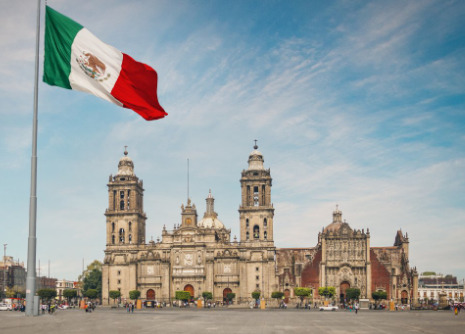
View On WordPress
0 notes
Text
The Creature Awaits #163:
Each week I plan to feature an amazing creature, admiring God's fantastic artistry. Hopefully it’ll brighten someone’s day to see something new and interesting if they haven’t seen it before. : )

(Photography by talented traveler-photographer, Rick Berg (CC BY-NC 2.0))
The Leatherback Turtle
Scientific Name: Dermochelys coriacea
Region: Scattered populations across oceans worldwide
Size: About 6'-7.2' (~1.8m-2.2m) long from head to tail
Interesting Notes: Like the Florida Softshell Turtle we covered a while back, the Leatherback Turtle lacks the bony plated shell of most turtles, having instead a softer shell made of cartilage-like tissue covered in thick, leathery skin. They were once commonly given nicknames containing the word "lute" as the ridges on their back reminded people of the ribbed back of a lute. Of course, the most noticeable feature is this turtle's size. Largest of all known living turtles, it is also the heaviest, with the most massive specimens weighing up to 1,500lbs (680kg). Sadly, several subpopulations of this magnificent turtle are considered critically endangered due to fishery bycatch and collection/destruction of their eggs.
#creatureawaits#leatherback turtle#lute turtle#Dermochelys coriacea#luth#lute#largest turtle#biggest turtle#heaviest turtle#beautiful turtle#magnificent turtle#endangered species
0 notes
Text
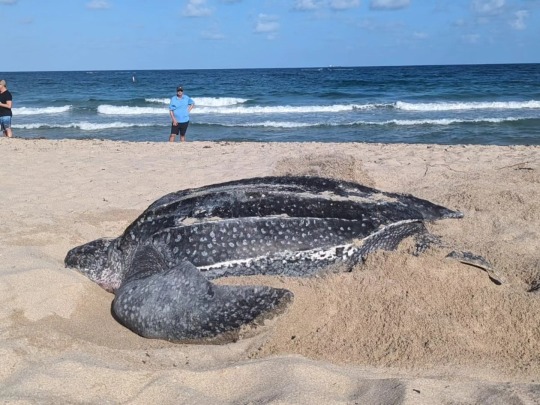
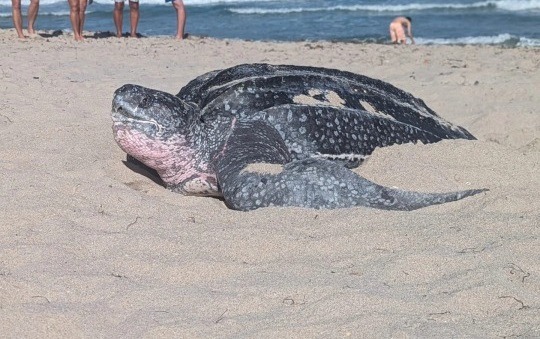
Leatherback Sea Turtle (Dermochelys coriacea), family Dermochelyidae, Florida, USA
The largest turtle in the world, and the heaviest known non-crocodilian reptile, reaching lengths of up to 1.8 metres (5 ft 11 in) and weights of 500 kilograms (1,100 lb).
Unlike most reptiles, their skin does not have scales.
Vulnerable.
photograph via:
Broward County Sea Turtle Conservation Program
#leatherback#sea turtle#dermochelys#dermochelyidae#turtle#reptile#herpetology#ocean#animals#nature#north america
797 notes
·
View notes
Text


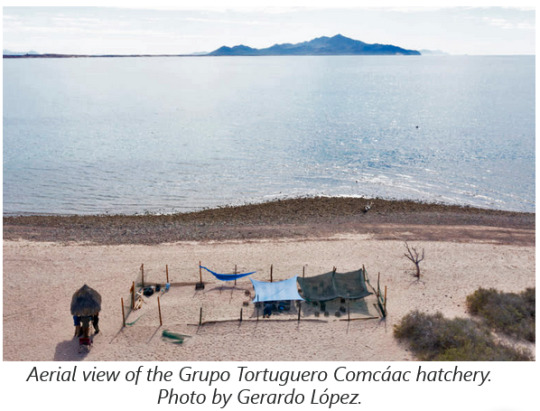

The Grupo Tortuguero Comcáac, the Sea Turtle Group of the Comcáac people, in El Desemboque de los Seris is fighting to increase the population of sea turtles, a sacred animal, in the Gulf of California. In the past five years they have managed to release more than 8,000 olive ridley sea turtles (Lepidochelys olivacea) hatchlings along 14 kilometers (9 miles) of the Mancha Blanca and El Faro beach. [...]
Mayra Estrella’s father always spoke to her about sea turtles. [...] “We are more tied to the leatherback sea turtle, but we are also connected to the green sea turtle [...].” Mayra Estrella [...] has dedicated 23 years to working with these reptiles or marine chelonians, earning her the affectionate name “turtle mom” among her colleagues and the people in her community of El Desemboque de los Seris – or Haxöl Iihom, its original name in cmiique iitom, the language of the Comcáac people. She earned her nickname after others saw the love she has for the little animals that leave the nesting pen in the turtle camp located between the desert and the sea in the municipality of Pitiquito, Sonora, in northwestern Mexico.
This camp was created to ensure the survival of turtles in oceans, not only because they are seriously threatened, but also because of what they represent for the Comcáac people. Because of this, Mayra Estrella and a group of 20 others in her community [...] are working to protect [...] turtles and their nests [...]. In the last five years she has witnessed a growth in the number of nests and hatchlings released, with more than 8,000 olive ridley turtles (Lepidochelys olivacea) released into the waters of the Gulf of California. By the end of November 2021, this figure is estimated to be 11,000 hatchlings.
---
“My dad loved to tell me stories, songs and tales about our ancestors,” Estrella adds. “He told me that the leatherback sea turtle [Dermochelys coriacea], was a man before becoming a turtle [...].” It has been several years since the community has seen a leatherback sea turtle in the area. [...] [T]he leatherback sea turtle is one of the most endangered turtles in the world. The International Union for Conservation of Nature (IUCN) classifies it as critically endangered. [...]
While waiting for a leatherback sea turtle to return, Mayra Estrella takes care of the rest of the turtles that come lay their eggs along 11 kilometers (7 miles) of the Mancha Blanca beach and 3 (2 miles) of the El Faro beach. At night, when the female turtles finish laying their eggs and return to the sea, the turtle team collects and takes them to the camp to protect them from coyotes (Canis latrans), their natural predators in the desert.


Their workdays last up to 12 hours [...]. Over time, they began receiving funding from the state during the nesting seasons. However, Mayra Estrella maintains that “the work achieves more than the resources because [the funds] are cut off too soon.” She explains that they are currently “working without one peso,” though this does not stop them because they love their work. [...] Germán Barrera works at CONANP, is an analyst of protected natural areas and the technical manager of the Comcáac turtle project, where he serves as liaison between the indigenous community and CONANP. [...] According to Barrera, the Comcáac Nation team works hard without seeing limited funds as a stumbling block [...]. “Since the start of the project, there has not been a single year that they have not carried out activities. [...]”
---
The Grupo Tortuguero Comcáac (Sea Turtle Group of the Comcáac Nation) belongs to the national network of the Grupo Tortuguero de las Californias (Sea Turtle Group of the Californias), for which Karen Oceguera – a marine biologist and researcher – represents more than 50 teams throughout nine Mexican states. For 12 years she has supported the process of the Comcáac turtle catchers on nesting beaches, providing training and managing permits from the environmental authority [...].
“We haven’t seen a leatherback sea turtle for years, but the turtles we do see and that have increased thanks to conservation efforts is the olive ridley sea turtle, which is the most common species in the entire northwestern region of Mexico and part of the Pacific,” explains Oceguera. [...] “According to the Mexican Official Norm [...], the species is endangered, but in international categories it is considered vulnerable, and so is no longer endangered. I believe this is thanks to the work of many community groups over many years, such as the Comcáac in this case.” [...]
“It is not anecdotal, but formal,” she adds. “According to CONANP, there were between four and seven nests per season [in the Comcáac territory] 10 years ago; now we see more than 50 or 60. This was not seen before and tells the authorities that even with the little support they can give to communities, the work is paying off.”
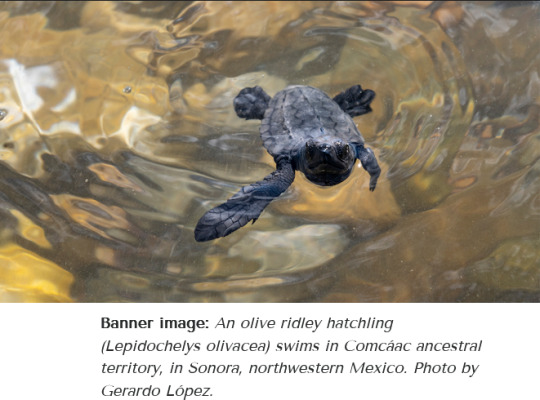
---
Headline, images, captions, and text by: Astrid Arellano.”Indigenous Comcaac turtle group saves sea turtles in Mexico’s Gulf of California.” Mongabay. As translated in English. 17 February 2022. Story originally published in Spanish at Mongabay’s Latam site on 19 November 2021. [Some paragraph breaks and contractions added by me.]
413 notes
·
View notes
Text
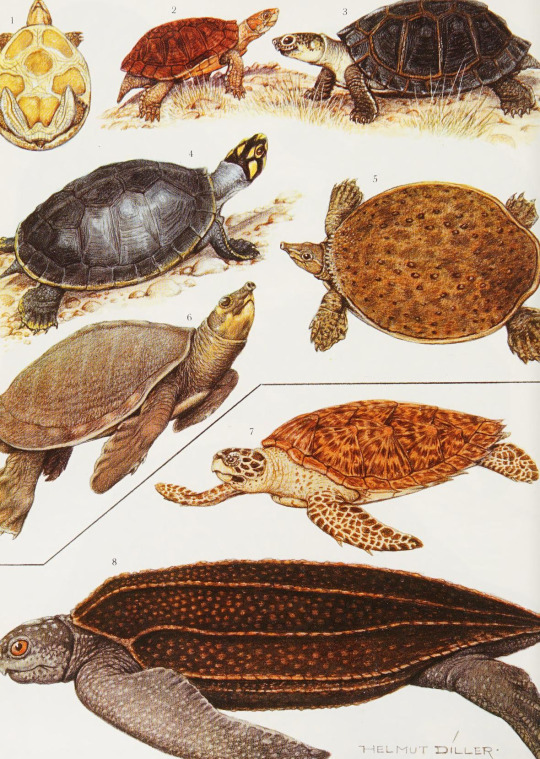
Grzimek's Animal Life Encyclopedia. Volume 6: Reptiles. Written by Bernard Grzimek. 1984. Illustration by Helmut Diller.
1.) Indian flapshell turtle (Lissemys punctata)
2.) Marsh terrapin (Pelomedusa subrufa)
3.) Pan terrapin (Pelusios subniger)
4.) Yellow-spotted river turtle (Podocnemis unifilis)
5.) Spiny softshell turtle (Apalone spinifera)
6.) Pig-nosed turtle (Carettochelys insculpta)
7.) Hawksbill sea turtle (Eretmochelys imbricata)
8.) Leatherback sea turtle (Dermochelys coriacea)
#reptiles#turtles#Indian flapshell turtle#Marsh terrapin#Pan terrapin#Yellow-spotted river turtle#Spiny softshell turtle#Pig-nosed turtle#Hawksbill sea turtle#Leatherback sea turtle#Helmut Diller
215 notes
·
View notes
Text
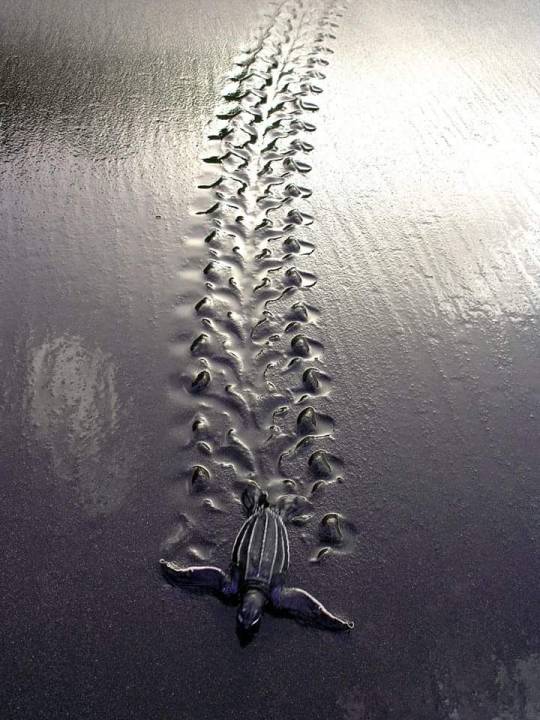
Sandprints of the leatherback sea turtle (Dermochelys coriacea) hatchling
Photo: marinecreatures.com
77 notes
·
View notes
Text


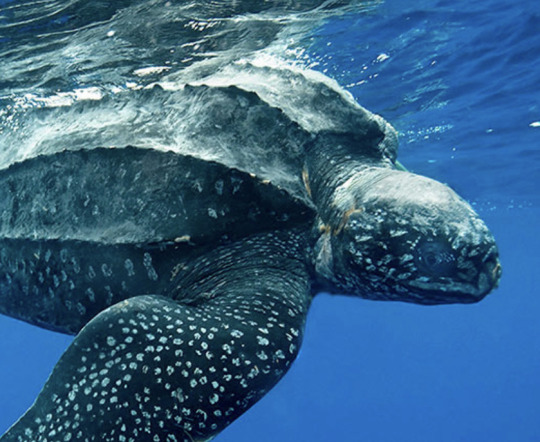
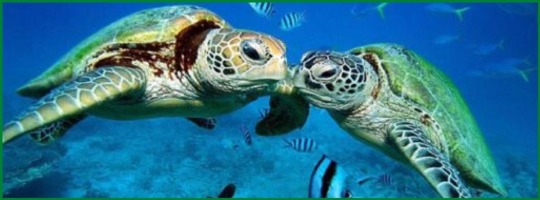
Image 1 : Loggerhead - Caretta caretta
Fun Fact : Loggerheads are the oldest reptile species which started to live in the sea instead of land. The oldest fossil of them that is known is from 150 million years ago ! (*´◒`*)
Image 2 : Kemp's ridley - Lepidochelys kempi
Fun Fact :The Kemps ridley sea turtle is the smallest and most endangered sea turtle species.( omg the nose looks like a heart !) (*^o^*)
Image 3 : Leatherback - Dermochelys coriacea
Fun Fact : Leatherbacks are the only species of sea turtle that don't have scales and a hard shell. (๑˃̵ᴗ˂̵)
September 29 , 2023 (^_−)−☆
Happy Birthday, @lonely99sworld ! 🫶
#marine biology#fun facts#ocean#marine science#ocean life#salt water#scientific names#endangered species#aqua life#meow#sea turtle#leatherback turtle#loggerhead
19 notes
·
View notes
Note
How sharp are the turtle oesophagus spikes? I imagine it would be uncomfortable if one shifted and poked the other side of the throat
They're pretty spiny, but they also bend quite a bit. It's very weird material. In life they're also totally pink.
22 notes
·
View notes
Text
Las especies de tortugas protegidas en México.
programa de protección de tortugas marinas.
Tortuga Caguama//Caretta caretta
Tortuga Lora//Lepidochelys kempii
Tortuga Carey//Eretmochelys imbricata
Tortuga Verde-Prieta// Chelonia mydas
Tortuga Golfina//Lepidochelys olivacea
Tortuga Laúd//Dermochelys coriacea



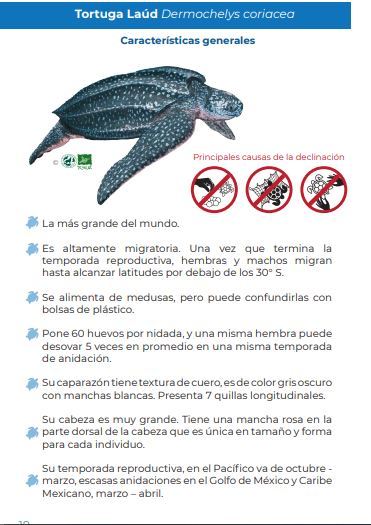
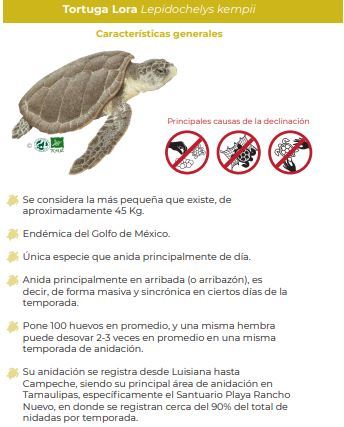

3 notes
·
View notes
Text
Animal of the Day!
Leatherback Sea Turtle (Dermochelys coriacea)

(Photo from DinoAnimal)
Conservation Status- Vulnerable
Habitat- Pacific Ocean; Atlantic Ocean; Indian Ocean
Size (Weight/Length)- 780 kg; 2 m
Diet- Jellyfish; Seaweed; Small fish
Cool Facts- The leatherback sea turtle is the largest species of turtle and one of the heaviest reptiles. Born on beaches in Florida and Indonesia, these turtles spend the majority of their lives in the open ocean. Being an active jellyfish predator, leatherback sea turtles follow the swarms from place to place. Very few predators are large enough to take on these turtles, only large great white sharks and killer whales are able to take them down. Sadly, many more of these turtles die from plastic consumption by mistaking it for a jellyfish. They are also caught as bycatch in fishing nets. Luckily, many countries protect these gentle giants on a federal level. Several well known hatchery beaches are protected from predators and extreme temperatures, with hundreds of volunteers protecting eggs and ushering hatchlings to the sea.
Rating- 14/10 (Hope with all your heart that they can be saved.)
#Animal of the day#Animals#Reptile#Turtle#Sea Turtle#Saturday#August 6#Leatherback sea turtle#biology#science#conservation#the more you know
55 notes
·
View notes
Photo

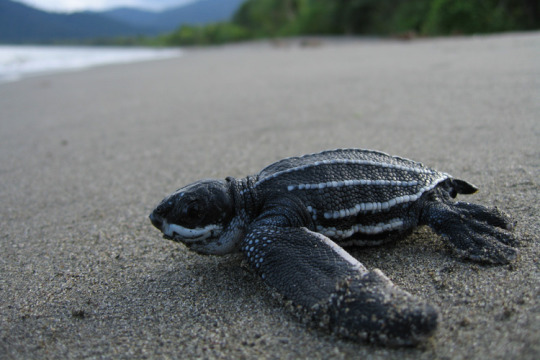
Dermochelys coriacea or Leatherback Sea Turtles
Leatherback Sea Turtles are the largest living species of turtle, measuring up to 2.4 m (7.9 ft) in length! Their main food source is jellyfish but they’ll also eat squids, crustaceans, sea urchins, fish, algae and seaweed. The Leatherback Sea Turtle is critically endangered and their biggest threat comes from over-harvesting their eggs and commercial fishing. Donate here to help the conservation of these and other sea turtle species!
#marine life#marine animals#marine creatures#marine biology#marine ecosystem#sea turtle#sea turtles#baby sea turtles#baby turtle#turtle#reptile#reptiles#sea#sea life#sea animals#sea creatures#ocean#oceans#fun facts#animal facts#conservation#wildlife#nature#earth#leatherback sea turtle#cute animals#animal#animals
144 notes
·
View notes
Text
Ernst Haeckel was born #OTD (16 Feb 1834 - 9 Aug 1919). Here are two of his Kunstformen der Natur (1904) reptile plates that don't get shared as often, along with keys to the species depicted: Plate 79 Lacertilia (lizards) + Plate 89 Chelonia (turtles).




Key to Plate 79:
1. Cameroon Sailfin Chameleon
2. Chameleon Forest Dragon
3. Flying Dragon
4. Texas Horned Lizard
5. Kuhl's Flying Gecko
6. Common Basilisk
7. Frill-necked Lizard
8. Thorny Devil
-
1.Chamaeleon montium (Buchholz) = Trioceros montium/Chamaeleo montium Buchholz, 1874 (See Trioceros montium)
2. Lophyrus tigrinus (Duméril) = Gonocephalus chamaeleontinus Laurenti, 1768 (See Gonocephalus chamaeleontinus)
3. Draconellus volans (Linné) = Draco volans Linnaeus, 1758 (See Draco volans)
4. Phrynosoma cornutum (Wiegmann) = Phrynosoma cornutum (Harlan, 1825) (See Phrynosoma cornutum)
5. Ptychozoon homalocephalum (Kuhl) = Ptychozoon kuhli Stejneger, 1902 (See Ptychozoon kuhli)
6. Basiliscus americanus (Daudin) = Basiliscus basiliscus (Linnaeus, 1758) (See Basiliscus basiliscus)
7. Chlamydosaurus kingii (Gray) = Chlamydosaurus kingii Gray, 1827 (See Chlamydosaurus kingii)
8. Moloch horridus (Gray) = Moloch horridus Gray, 1841 (See Moloch horridus)
Key to Plate 89:
1: Leatherback Turtle
2: Hawksbill Turtle
3: Argentine Snake-necked Turtle
4: Mata Mata
5: Geometric Tortoise
6: Galápagos Tortoise
7: Common Snapping Turtle
-
1. Dermatochelys coriacea (Blainville) = Dermochelys coriacea (Vandelli, 1761)
2. Caretta imbricata (Gray) = Eretmochelys imbricata (Linnaeus, 1766)
3. Hydromeda tectifera (Wagler) = Hydromedusa tectifera Cope, 1869
4. Chelys fimbriata (Duméril) = Geochelone nigra (Quoy & Gaimard, 1824)
5. Testudo geometrica (Linné) = Psammobates geometricus (Linnaeus, 1758)
6. Testudo elephantina (Duméril) = Dipsochelys dussumieri Gray, 1831
7. Chelydra serpentina (Schweigger) = Chelydra serpentina (Linnaeus, 1758)
#turtle#turtles#tortoise#tortoises#lizard#lizards#reptiles#Chelonia#Testudines#Lacertilia#herpetology#natural history art#scientific illusration#Ernst Haeckel#European art#20th century art#1900s#Art Nouveau#illustration#print#book plate#Kunstformen der Natur#OTD#animals in art
4 notes
·
View notes
Text
0 notes